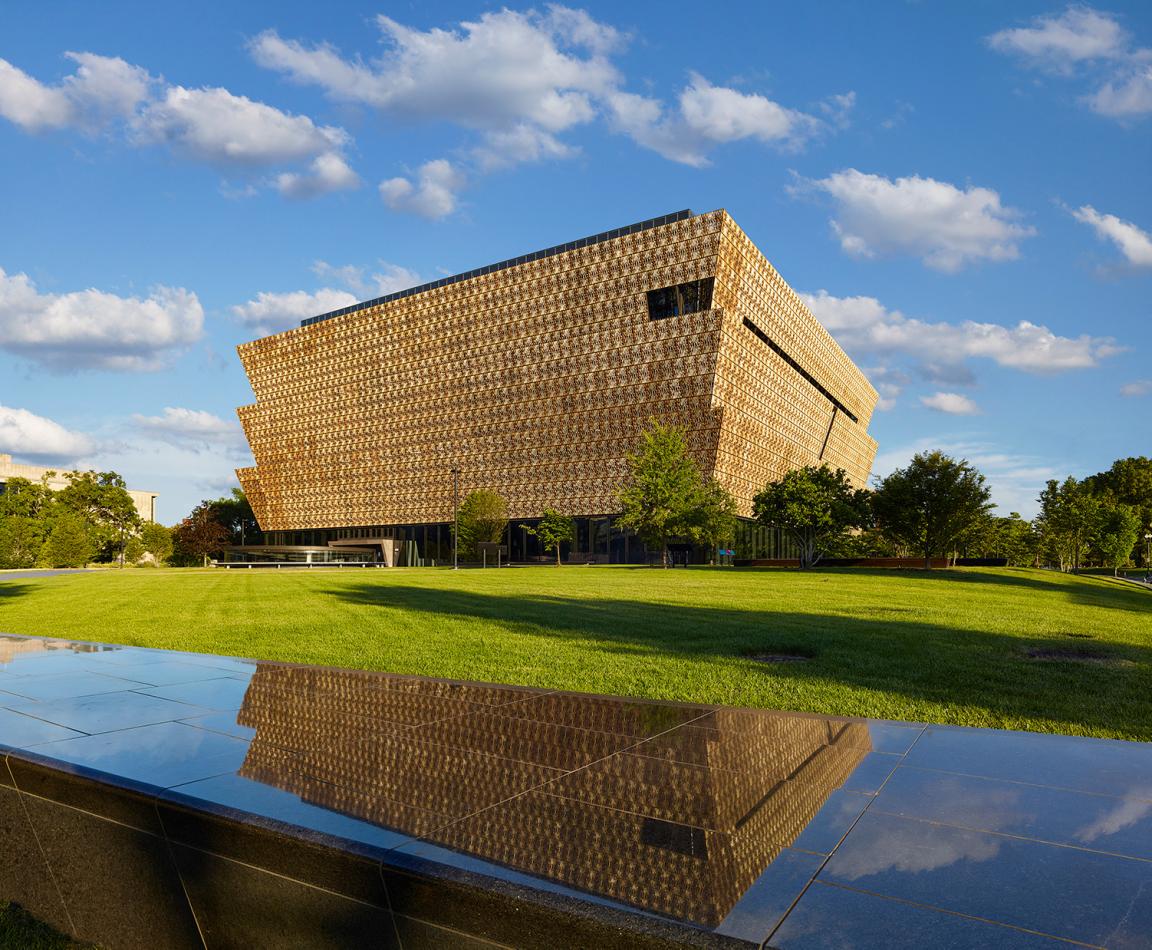Symposium Examines Activism, Engagement and Impact of Black Architects and Planners Since 1968
Amid the urban unrest of the civil rights and black power movements, 1968 was a defining year for architects and planners. The Smithsonian’s National Museum of African American History and Culture explores the 50th anniversary of that pivotal year and starts a discussion on what the nation can learn from it in “Shifting the Landscape: Black Architects and Planners, 1968 to Now.” This symposium will be held Thursday Sept. 27–Saturday, Sept. 29 at the museum.
Registration for the symposium has reached capacity. Walk-ins will be accepted as space allows, and all are invited to attend the Thursday and Friday sessions via Livestream.
Limited seating is available for journalists by contacting the media team above. No registration is required for the Saturday afternoon session held at the Smithsonian’s National Museum of African Art.
The symposium will examine the role of architects and planners in creating the shared experiences of people in their communities. The museum has assembled more than 30 scholars and practitioners to discuss how black architects and planners imagine their roles today, share what they are passionate about and committed to, and explore how their practices are making an impact on the future of the built environment.
“The architects and city planners that emerged to rebuild American cities in the wake of the tumultuous 1960s had a vision for what could come after and were leading the way for their contemporaries of that era,” said Kinshasha Holman Conwill, deputy director of the museum. “With the symposium, we are able to shed light on their contributions and expose new generations to a field of study that has the ability to empower and revitalize communities.”
“Shifting the Landscape” is an extension of the museum’s initiative focused on collecting the archives of black architects. Now open on the museum’s second floor, this new display traces black architectural history through recent acquisitions including drafting tools and historical records from prolific African American architects. The display will be on view through Nov. 4.
“The museum has a commitment to document black architectural history and highlight the achievements, challenges and cumulative production of black architects,” said Michelle Joan Wilkinson, museum curator and symposium organizer. “This symposium will bring attention to these professions and help inspire youth to make positive change in their communities through architecture and planning.”
In June 1968, Whitney M. Young Jr., executive director of the National Urban League, delivered a crucial address to the American Institute of Architects. Young called for more diversity in the profession and challenged architects to act on critical issues facing urban communities. Following the speech, new funding initiatives opened doors for minority students to pursue architecture and planning degrees. That same year, architect J. Max Bond Jr. began teaching at Columbia University, where he recruited African American students into the field of architecture. Bond, a leader among black architects, imagined architects to be a “bridge to the community.” Bond ultimately went on to become one of the museum’s design architects as part of Freelon Adjaye Bond/SmithGroup, a team he was instrumental in assembling.
Activism in Architecture and Planning: 1968 in Review (5 p.m. Thursday) will feature a panel discussion on the events of 1968, focusing on the paradigm shift that began when black architects and planners demanded that architecture education and practice reflect a commitment to social justice and community needs.
Sharon Egretta Sutton, architectural activist, educator and author of When Ivory Towers Were Black: A Story about Race in America’s Cities and Universities, will give the keynote for the symposium at 10:30 a.m. on Friday. Drawing from her book, Sutton will discuss her experiences as an architecture student and her evolution within the profession since the late ’60s.
On Friday from 1:30 to 2 p.m., the museum’s design architect, Sir David Adjaye OBE of Adjaye Associates will be joined in conversation by Craig L. Wilkins of the University of Michigan for Holding Space: Architects in Conversation.
Other panels will focus on architectural design, urban planning, and creative interventions in these fields. On Saturday 2–4 p.m., the panel Shifting the Lens: Diaspora Perspectives on Architecture and Design closes out the program at the National Museum of African Art.
See full symposium schedule here.
“Shifting the Landscape” is supported by the American Institute of Architects.
About the National Museum of African American History and Culture
The National Museum of African American History and Culture opened Sept. 24, 2016, on the National Mall in Washington, D.C. Occupying a prominent location next to the Washington Monument, the nearly 400,000-square-foot museum is the nation’s largest and most comprehensive cultural destination devoted exclusively to exploring, documenting and showcasing the African American story and its impact on American and world history. In 2018, the U.S. Green Building Council’s Leadership in Energy and Environmental Design (LEED) program officially certified the building LEED Gold. For more information about the museum, visit nmaahc.si.edu, follow @NMAAHC on Twitter, Facebook, Instagram and Snapchat—or call Smithsonian information at (202) 633-1000.
# # #
SI-514-2018

